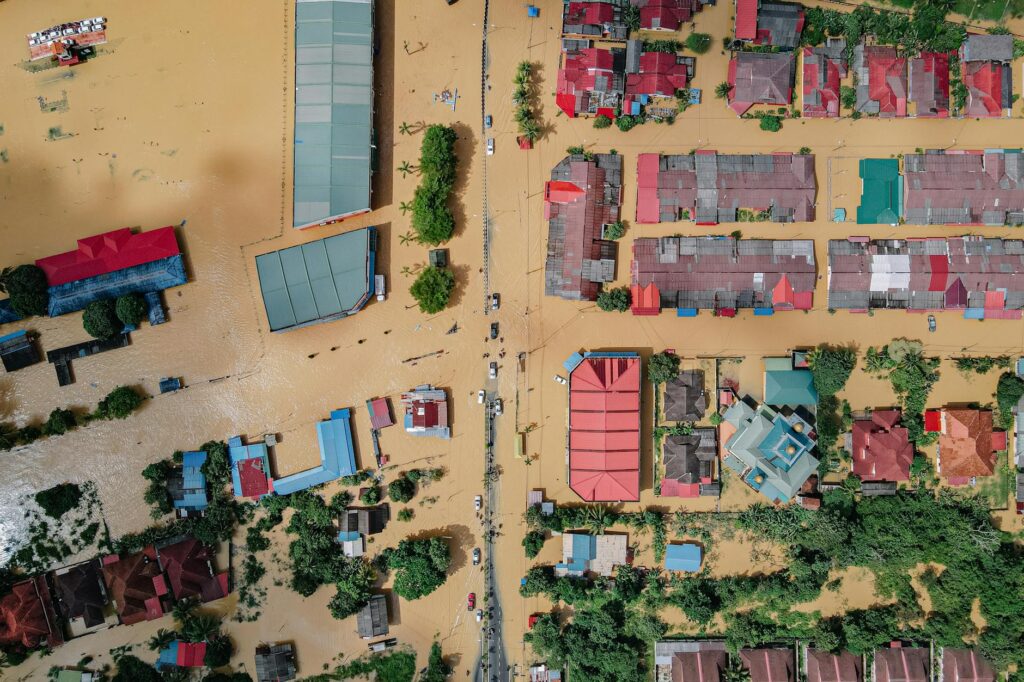Hey guys! Once again, thank you for your presence here on the site. Today, we are going to address a problem that unfortunately plagues the overwhelming majority of municipalities in Brazil: floods.
Floods: a combination of natural and human factors
Floods are, in essence, a natural phenomenon triggered by rain. However, in Brazil, they are also caused by human actions, both by public authorities and the population in general. The lack of asphalt updating, the absence of canalization of rivers and streams, negligent companies in the maintenance of drains, and the construction of properties in areas prone to flooding are some of the contributing factors.
According to the Intergovernmental Panel on Climate Change (IPCC) Report, floods are likely to become more frequent and severe in the coming decades, due to increases in global temperatures and changes in precipitation patterns.
Affected cities and the persistence of the problem
Cities like São Paulo, Belo Horizonte and Rio de Janeiro have a sad tradition of dealing with floods, and year after year the situation persists. Many rivers and streams are perennial, which means they do not dry out, accumulating water in their mouths and causing overflows. It is important to highlight that the topography of cities, with streets and avenues in lower regions, facilitates the accumulation of water during storms, resulting in insufficient drainage and recurrent flooding.
In 2024, however, it appears that the problem has worsened. Brazil faced several flood situations in different regions of the country, especially in the summer, when the rains were more intense and voluminous due to the El Niño phenomenon, which warmed the waters of the Pacific Ocean and influenced the climate in South America. Some examples of cities that suffered from the floods were:
- São Sebastião (SP): in February, a record storm left dozens dead and hundreds homeless in the coastal city. The volume of rain reached 600 millimeters in 24 hours, which is considered unprecedented in the region.
- Caraá (RS): in June, the municipality was the epicenter of one of the worst climate tragedies of recent decades in Rio Grande do Sul. An extratropical cyclone caused strong winds and torrential rain, causing landslides and flooding that killed 15 people and left almost 5 thousand homeless.
- Southern Bahia: in November, the region experienced the worst flood in the last 35 years, affecting more than 20 thousand people. River levels rose more than 10 meters above normal, flooding homes, businesses and crops. Civil Defense declared a state of public calamity in 12 municipalities.
Possible consequences and measures
In addition to material damage, floods bring with them the incidence of diseases transmitted by animals such as rats and cockroaches. The precariousness of medical care in some regions further worsens the situation. Some actions by public authorities can help minimize these problems, such as:
- Monitor climatic and hydrological conditions to issue warnings and guidance to the population in case of flood risk.
- Carry out urban infrastructure works to improve the drainage and drainage capacity of rainwater, such as culverts, storm sewers, reservoirs and swimming pools.
- Promote the recovery and conservation of green areas in cities, especially at river sources and banks, to increase water infiltration into the soil and reduce erosion.
- Monitor and prevent irregular occupation of risk areas, as well as relocate families living in these areas to safe and dignified locations.
These necessary actions illustrate how floods in Brazil are the result of a combination of natural and anthropogenic factors, that is, related to human action. Cities are often not prepared to deal with intense rains, as they do not have an adequate drainage, garbage collection and territorial planning system. Furthermore, the disorderly and irregular occupation of risk areas, such as slopes and riverbanks, increases the vulnerability of populations to floods.
The role of the citizen and demands from public authorities
Unfortunately, over the years, little has been done to effectively solve the problem of flooding in Brazil. However, you realized that, in part, this also depends on each of us. Don't throw trash on the street, don't dirty rivers and streams, doing your part can make a significant contribution.
If each citizen fulfills their responsibilities, we will be better able to demand effective actions from public authorities to solve this problem that affects everyone. Remember, even those who live on the outskirts pay taxes and deserve the same treatment given to others.
Floods in Brazil are a challenge that requires the participation and responsibility of all sectors of society. Only in this way will we be able to reduce the damage caused by this phenomenon and guarantee a better quality of life for present and future generations.
References:
- Cyclones, floods, heat and storms: what to expect in 2024? | abc+ WEATHER AND CLIMATE. Available at: https://www.abcmais.com/brasil/rio-grande-do-sul/cliclones-enchentes-calorao-e-temporais-o-que-esperar-de-2024/
- Floods in Brazil: causes, consequences, how to prevent. Available at: https://aguasustentavel.org.br/conteudo/blog/210-enchentes-no-brasil-causas-consequencias-como-prevenir
- Floods in Rio and disorderly expansion – Valor Econômico. Available at: https://valor.globo.com/impresso/noticia/2024/01/16/enchentes-no-rio-ea-expansao-desordenada.ghtml
- Excessive heat, droughts and torrential rains: why Brazil could be more affected by climate change – BBC News Brasil. Available at: https://www.bbc.com/portuguese/articles/clmp08dj43vo




